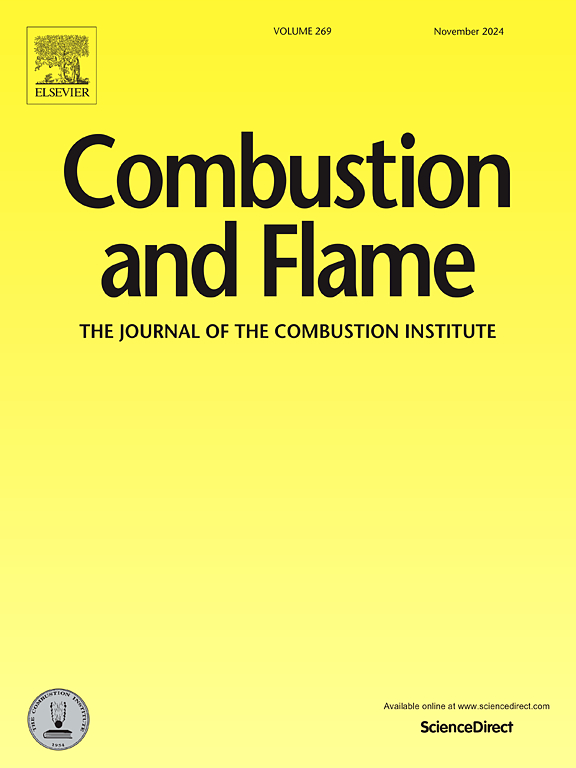A detailed experimental and numerical study on the ignition temperature of single micron-sized spherical iron particles
IF 5.8
2区 工程技术
Q2 ENERGY & FUELS
引用次数: 0
Abstract
Measuring the ignition temperature of micron-sized iron particles can verify the ignition mechanism and aid in designing efficient iron powder combustion devices. This study captured the diameter, morphology and ignition status of iron particles with diameter range from 17 to 45 μm entering a stable high-temperature environment by high-speed cameras. The ignition frequency of iron particles at different ambient temperatures and oxygen concentration were recorded. Defining the ignition temperature as the ambient temperature at which the ignition frequency of iron particles exceeds 0.9, it was found that the ignition temperature of iron particles heated from room temperature and closer to a spherical shape is approximately 1140 K, while the non-spherical iron particles is around 1120 K. The ignition temperature is independent of particle diameter and ambient oxygen concentration. The theoretical method for estimating ignition temperature (X.C. Mi, A. Fujinawa, J.M. Bergthorson, 2022) aligns well with the experimental results. Theoretical analysis indicates that the oxidation mechanism at low temperatures (below 800 K) does not affect the ignition temperature, preheating does not effectively reduce the ignition temperature, and iron particles with high specific surface areas, such as sponge iron powder, exhibit significantly lower ignition temperatures.
Novelty and significance statement
This study, for the first time integrates experimental investigation with theoretical models to systematically examine the ignition temperature of individual micron-sized iron particles under diverse conditions. The experimental approach allows precise in-situ characterization of particle diameter, particle morphology in different ambient oxygen concentration, providing insights into their respective effects on ignition temperature. Through comprehensive theoretical discussion and experimental validation, the ignition mechanism of iron particles is verified, offering crucial parameters for the design and optimization of efficient iron particle combustion systems.
求助全文
约1分钟内获得全文
求助全文
来源期刊

Combustion and Flame
工程技术-工程:化工
CiteScore
9.50
自引率
20.50%
发文量
631
审稿时长
3.8 months
期刊介绍:
The mission of the journal is to publish high quality work from experimental, theoretical, and computational investigations on the fundamentals of combustion phenomena and closely allied matters. While submissions in all pertinent areas are welcomed, past and recent focus of the journal has been on:
Development and validation of reaction kinetics, reduction of reaction mechanisms and modeling of combustion systems, including:
Conventional, alternative and surrogate fuels;
Pollutants;
Particulate and aerosol formation and abatement;
Heterogeneous processes.
Experimental, theoretical, and computational studies of laminar and turbulent combustion phenomena, including:
Premixed and non-premixed flames;
Ignition and extinction phenomena;
Flame propagation;
Flame structure;
Instabilities and swirl;
Flame spread;
Multi-phase reactants.
Advances in diagnostic and computational methods in combustion, including:
Measurement and simulation of scalar and vector properties;
Novel techniques;
State-of-the art applications.
Fundamental investigations of combustion technologies and systems, including:
Internal combustion engines;
Gas turbines;
Small- and large-scale stationary combustion and power generation;
Catalytic combustion;
Combustion synthesis;
Combustion under extreme conditions;
New concepts.
 求助内容:
求助内容: 应助结果提醒方式:
应助结果提醒方式:


